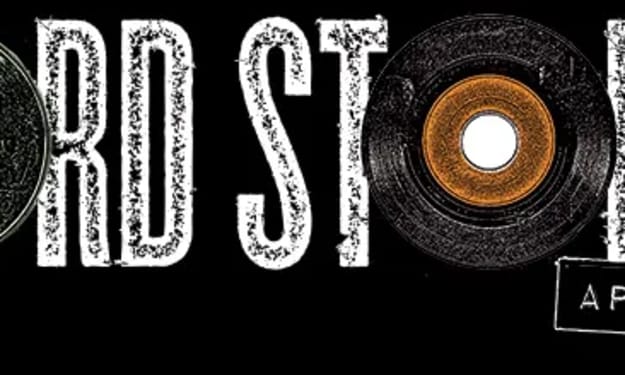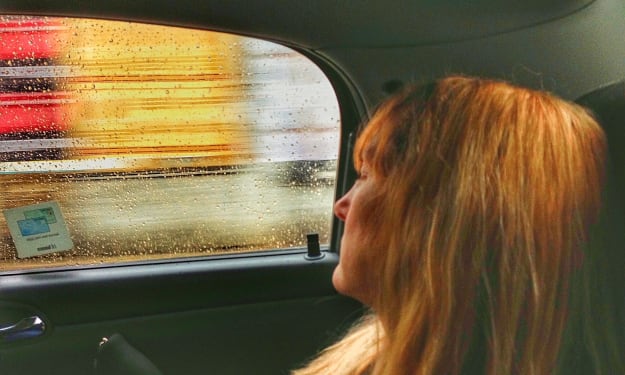The Shocking Lack of Women on Festival Lineups
Is it getting any better?

By researching about music festivals, it has become apparent that there has been the distinct issue of the representation of women at these events. This is a problem that affects every career path within music; however, it’s most detrimental to the female performer. There is an overwhelming lack of female representation within UK festivals, and this is shown by statistics with male artists occupying up to 96 percent of festival bills.
It’s common and unsurprising to see festivals being heavily male-dominated. For example, this year at Wireless Festival in the UK, there are three female performers across the whole weekend festival. It is not even like there are a lack of female performers killing it in this genre (R&B). It’s not just the UK it’s restricted to—it is an international problem.
Lady GaGa Headlining the Main Stage at Coachella 2017

Last year, Beyoncé (who was later replaced with Lady Gaga because of Beyonce’s pregnancy) broke Coachella’s 10-year-long streak of male-dominated headliners. Coachella is one of the biggest and hyped festivals in the world, it’s hard to believe that it has struggled to find a female artist willing to headline. It’s also very unlikely that Coachella couldn’t afford to book them.
There’s also a glaring pay difference between them and their male counterparts even for headliners. Online blog ‘The conversation’ has highlighted that the gender pay gap is larger in the arts industry than any other. More than half of people attending festivals are women so why is the statistic for performers so different?
Major indie rock music festival Reading and Leeds has a very noticeable problem with the representation of women performers. This issue got mainstream recognition back in 2015 when the full festival line up was released. It showed that the number of female acts (including females in mixed gender bands) totaled at a measly nine across the whole weekend! Even though it this shed light on the problem, it hasn’t improved much, if any improvement at all since. This genre seems to have a big problem with the embodiment of women, and festivals is just the tip of the iceberg. It seems festivals are moving further and further away from just playing amazing music but toward what will draw in the biggest crowd. This highlights a large problem message in that there is a lack of women on line ups because they are seen as incapable of pulling big crowds. There was a scandal last year when a Middlesbrough pub ‘banned’ female artists and female-fronted bands from performing there. This drew up a lot of anger and, when questioned, the owner said, “We had female singers on in the past and customers just didn’t like it. We’re a rock bar and they don’t think that women should sing male rock songs… If we put a poster up and our regulars know there’s a woman in the band, they won’t give them a chance.” This sparks up the idea that there is a deeper root to the problem that causes festival lineups to be how they are. One reason why there could be a lack is that women haven’t felt inspired and encouraged in school to play the guitar, drums or join band as seen as a ‘male’ pathway and thus are excluded from it. “It’s a vicious cycle of misrepresentation, confusing effect with cause by perpetuating the idea that talented female musicians do not exist because they are not nearly as visible as their male counterparts.” Successful musician and singer-songwriter Laura Marling has stated, “If you prevent women from seeing any examples of them achieving, then it prevents them from believing they can achieve it.” This quote goes back to festival line-ups. Music festivals are the face of the industry where people can live music firsthand and get inspired, if there are no or few women on there then who will encourage the next generation of female artists?
The 2018 (this year) Bestival line up highlights that, to the embarrassment of other festivals that there’s a male dominated problem among festival bills by releasing a very female empowered line up. Rob de Bank (organiser and curator of Bestival) has proved that a more gender balanced line-up is possible. He also stated that 60 percent of the Bestival audience is female and has said that being able to reflect that in the lineup is a proud thing. Even though Bestival is seeming to be the most gender balanced major festival it’s still nowhere near to being equal with actually just under a quarter of the acts are female. That being said it still is a step in the right direction as it is a lot more than a lot of other festivals.
Larmer Tree Festival located in Dorset are giving female performers a massive boost at this year’s festival. They are fronting an all-female Saturday on their main stage, giving women the representation as well established performers and headliners. They’ve stated that not only is this pushing to get more women on festival bills but it celebrates and marks 100 years since women's suffrage.
ReBalance is such an important organisation because it’s not just focusing on short term solutions but looking to put the foundations in place for the long term. They’re not just shoving a few female acts on line ups as a token girls, it will provide the support for the things that matter to an emerging artist such as studio time, travel, accommodation, professional and practical advice.
Shockingly, the representation of women is also represented in the copyright companies. Only 23 percent of artists on PRS are female. This isn’t great, as the majority of artists are women. This means that women artists as a whole can be seen as being treated unfairly due to unfair copyright payments. This is also a prominent issue in technical roles in music. Less than five percent of women are taking up technical roles such as producing and engineering in music, including festival roles.
In conclusion, the representation and appearances of and from women artists at music festivals is very clearly a problem, and it is also apparent that it is not just isolated to female performers, but to every role—including business and tech. Luckily it is starting to get the attention it deserves; however, there is still a long way to go.






Comments
There are no comments for this story
Be the first to respond and start the conversation.